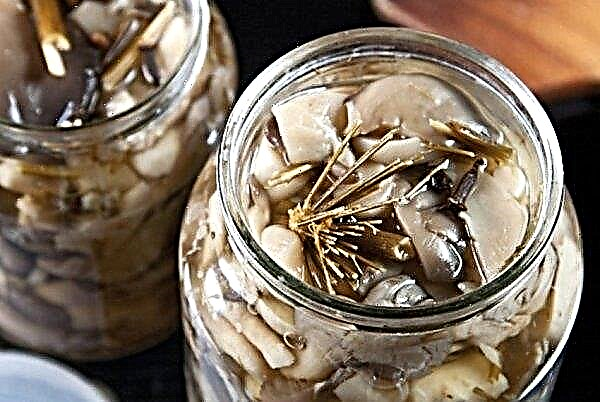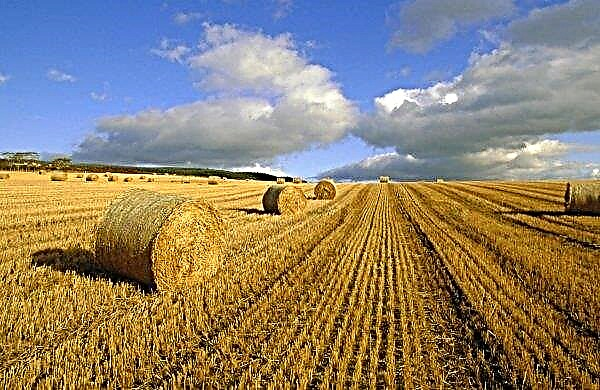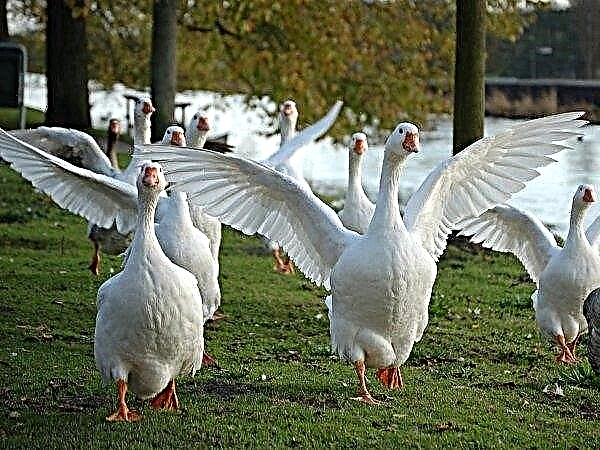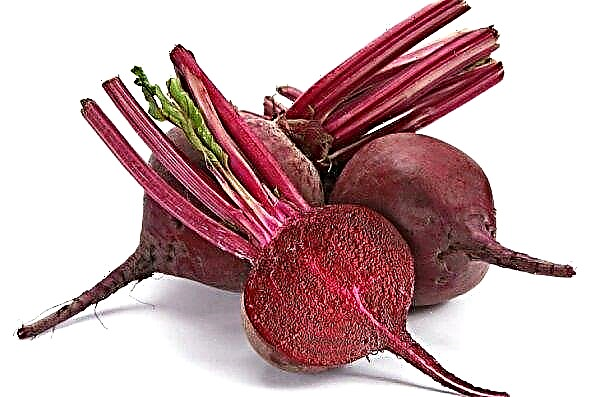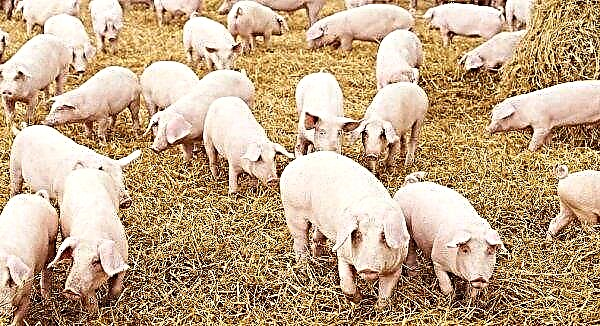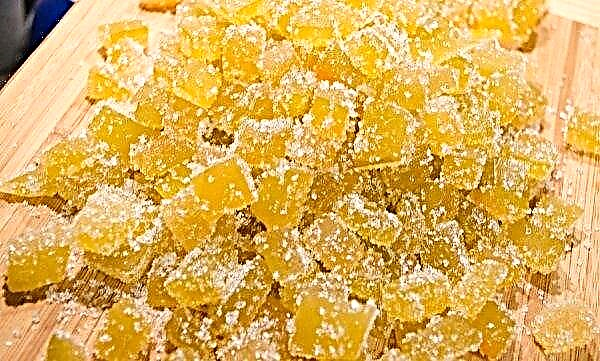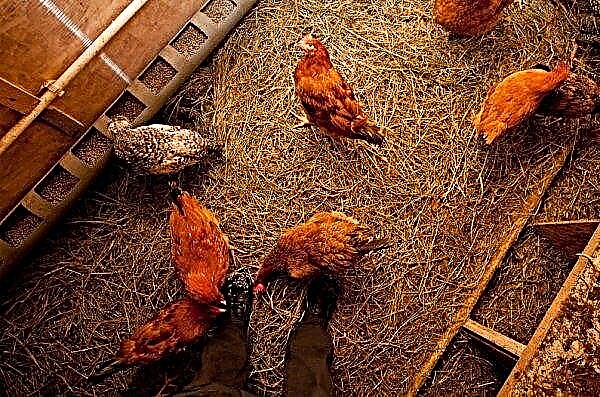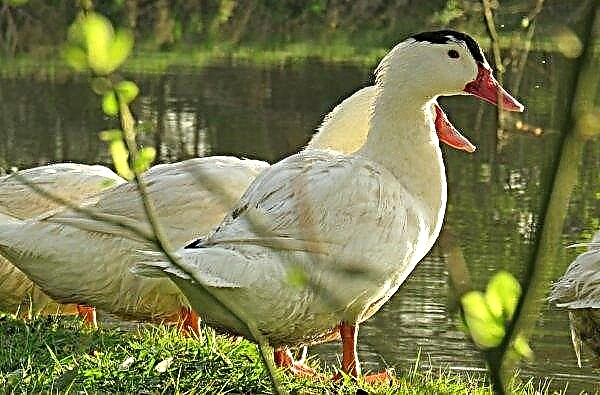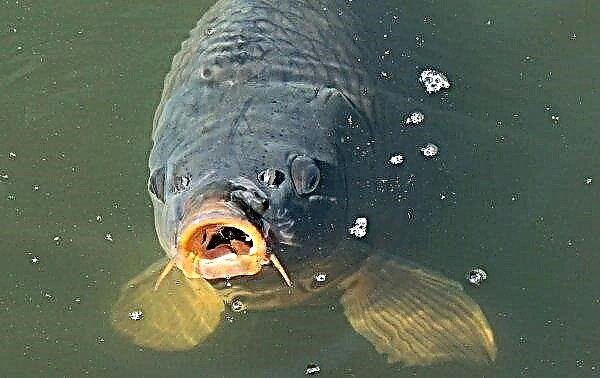Corn, or maize, is one of the most cultivated cereal crops. Although Mexico is considered its homeland, it is loved all over the world and is an integral part of national cuisines of different countries. It is grown both for industrial purposes and in personal plots. This article will tell you how to plant and grow yellow cereal in your country house correctly.
Did you know? The ancient Mayan and Aztec Indian tribes considered maize a sacred plant and even worshiped the gods of corn.
Features of growing corn
On the one hand, corn is very unpretentious and grows in different climatic zones. On the other hand, it is a tropical plant.
That is why for a full vegetation and a good harvest he needs to create certain conditions:
- Lighting. Corn does not develop properly in the shade. She needs a lot of bright sunlight. This is a prerequisite during the growing season when the sprout accumulates the necessary nutrients. Under poor lighting conditions, the uptake of nitrogen, potassium and phosphorus is complicated, which is why the formation and growth of cobs slows down and may completely stop. The presence of weeds, which obscure the crops and complicate the access of fresh air, also adversely affects, therefore, the best place to plant is a weed-free and well-lit area.
- Humidityb. Corn is a moisture-loving crop, but can withstand drought freely. But still, the maximum yield can be obtained only in conditions of high humidity. For this reason, in a dry period, you need to water the plant more often and more abundantly.
- Temperature. In general, Mexican cereal loves heat (not less than + 10 ° С). The optimum day temperature is + 22 ... + 25 ° С, night - + 18 ° С. Nevertheless, young shoots can withstand small spring frosts to -3 ° C.
- The soil almost any one is suitable if it has neutral acidity: loamy, sandy loam, chernozem. An important condition is friability and lightness. Do not sow corn in dense clay and acidic soil. In such conditions, it will develop very poorly.

What kind of corn is better to plant
There are many old and new corn varieties. Every year new hybrids appear, adapted to various weather conditions, including adverse ones. From the experience of many farmers it is known that later varieties proved to be the most productive.
But they are not suitable for regions in which autumn cold and frost begin early, so for planting in your garden it is best to choose one of the zoned varieties that are bred specifically for this area. It is also worth considering that varieties of sweet corn are more whimsical to care than feed.
The main criteria for the proper selection of corn varieties:
- adaptability to local conditions;
- purpose of use: in cooking or as animal feed;
- ripening: early, middle or late;
- resistance to pests and diseases;
- frost resistance;
- unpretentiousness.

Here are some of the varieties that meet the criteria listed:
- Swift - low early ripe variety with very sweet grains;
- Suite 77 - large mid-season variety, very sweet;
- Sundance - early ripe corn, suitable for the northern regions, with large ears;
- Triple sweetness - unpretentious and very sweet;
- Honey Bentham - an early ripe two-color grade.
Did you know? The Mexican word "tlaalli" ("corn") literally translates as "our body." This name is associated with the Aztec myth, according to which, the god of corn Tsenteotl was chopped up by another envious god, and parts of his body became corncobs.
When to plant corn
Landing times vary depending on local weather conditions. An important condition: the soil should be quite warm (+ 10 ... + 12 ° C). Seeds will germinate at a temperature of + 8 ° C, but very slowly. In accordance with this requirement, in the southern regions, sweet corn seeds are sown in the spring, at the end of April.
Super-sweet varieties are more thermophilic, seeds germinate at a temperature of + 12 ... + 15 ° С. In the south, they can be sown in the first half of May and wait for the harvest in August. In more northern areas, planting in open ground is shifted to June and even July, and in the greenhouse can be planted in May.

How to plant corn
When planting maize seeds, you should follow certain simple rules. It is necessary to prepare the land and seeds and sow them at the right distance. Ignoring these requirements, you can lose the crop.
Important! If the seeds of corn are first germinated, then they will sprout even faster.
Preparatory work
Preparation for sowing takes place in three stages:
- Place selection: a sunny area not shaded by trees, preferably protected from through winds, would be suitable.
- Land preparation begins back in the fall: harvesting weeds, digging and applying organic matter (manure) and phosphorus-potassium mineral fertilizers. In the spring, the day before planting, the soil is fertilized with nitrogen-containing fertilizing, loosened with straw or sawdust (if the soil is heavy) and leveled.
- Seed preparation. This procedure has a good effect: corn grains are heated in the sun or indoors at a temperature of + 35 ° C for 5 days, then soaked in warm water for a short time.

Landing pattern
When planting seeds and seedlings, it is very important to calculate how far apart they will grow. If the maize seedlings are too distant from each other, this will prevent cross-pollination. And in thickened plantings, they obscure each other and close the free access of air to the stems and roots.
In open ground
When sowing seeds, you should adhere to the optimal scheme:
- in open ground: 7 cm - depth, 40 cm - between holes, 60 cm - between rows;
- in the greenhouse: 30 cm - between seeds in a row, 50 cm - between rows, planting depth - 3 cm.
Often corn is planted around the perimeter of the garden. In this case, it is better to land not one, but 4–5 rows. In single-row planting, cross-pollination is complicated, and it will have to be done manually.
For seedlings, followed by planting in the ground
In the northern regions, seedlings are often grown first, and then planted in the ground in a summer cottage.
The procedure is performed in 2 stages:
- Seeds are sown in a box to a depth of 3 cm and a distance of several centimeters from each other. Recently, sowing of seeds in peat-earthen, paper or plastic cups has been increasingly practiced, which facilitates transplanting seedlings.
- After a month, seedlings with 3 leaves are transplanted into the ground. The sprouts are carefully removed from the boxes, trying not to damage the roots, and planted in prepared holes. From plastic cups and cassettes, seedlings are taken out along with a lump, in which case the roots do not touch and are not damaged. Seedlings planted in peat cups are planted in the ground with them. The pattern described above is preserved: 40 × 60 cm. The landing depth should be slightly larger than the earthen coma.
Video: planting corn seedlings in the ground
With what and after which you can plant corn
Crop rotation significantly affects the harvest of maize and other crops. Corn can be planted in one place for 2-3 years in a row, but then it is better to change the site. With such changes, the land resumes its fertility, which allows the maximum use of even small summer cottages. Predecessors should be cultures that restore the soil, not drain it.
- This includes the following plants:
- cereals: winter and spring wheat, row crops;
- potatoes and other root crops;
- legumes (peas, beans, beans);
- melons (melons, watermelons, pumpkin, zucchini);
- Tomatoes
- Unsuitable precursors are:
- sunflower and beets, because they do not fertilize, but drain the earth;
- millet and sorghum, because they have common diseases with corn, with which they can infect each other.
Important are the "neighbors" of corn. Experienced gardeners noticed that it grows well with cucumbers.
- Advantages of such a neighborhood:
- rows of maize on the windy side protect the cucumber bushes from strong winds;
- carbon dioxide is released from the soil in which corn grows, which positively affects the photosynthesis process in cucumber leaves.

Further care
Regular watering is an essential requirement for proper care, since corn is a water-loving plant. One seedling “drinks” 2–4 liters of water per day. But excess moisture and its stagnation in the soil can destroy the roots of plants, so you need to water the culture regularly and moderately.
During a drought, the frequency of watering increases, especially during flowering and cob formation. Drip irrigation is the best irrigation method that provides optimal soil moisture.
Corn needs to not only be “fed”, but also “fed”. A single presowing fertilizer will not be enough. You need to feed seedlings throughout the season: from the appearance of seedlings to fruiting. The composition of the fertilizer should differ depending on the stage of plant development: nitrogen is introduced until the formation of grains on the cobs, potassium in the first half of the growing season, and phosphorus is needed all the time.
There is a need for other elements: manganese, zinc, copper and boron. Mais also loves organic fertilizers, which are applied at the stage of 3-4 leaves: a solution of cow manure (1:10) or chicken droppings (1:20). After half a month, you can switch to mineral top dressing (dosage according to the instructions).
Hilling and weed removal
Weeds are serious enemies of corn, due to which the yield may decrease by 70%.
- Harm from weeds:
- Important are the "neighbors" of corn. Experienced gardeners noticed that it grows well with cucumbers.
- takes from the soil nutrients necessary for the development of culture;
- clogs the ground, preventing moisture and air from accessing the roots of maize.
To control weeds on large plantings, special herbicides are used. In small areas, the classical method - weeding - remains relevant. You need to start weeding after the emergence of corn seedlings. Then it must be done after each watering and rain.
- Regular weeding achieves the following goals:
- the destruction of weed seedlings and roots;
- moisture retention in the earth;
- loosening the soil to improve moisture and air access to the roots.
The necessary step is also the hilling of seedlings. It must be done during weeding after rain. On each bush, land is thrown to a height of 8-10 cm. Due to this, sprouts form air roots, which serve as additional strengthening of the stems and contribute to an increase in yield.
Pest and Disease Control
Although maize is a fairly robust plant, it is vulnerable to certain diseases and harmful insects.
Diseases include the following:
Fusarium - striking cobs, covering them with a pink coating and destroying grains. Favorable environment: wet weather in the rainy season. Sick shoots doomed to death grow from infected seeds. It is impossible to cure the plant from this disease, but it can be prevented. For prevention purposes, it is necessary to treat grains with any fungicide before sowing, observe the sowing dates and sow seeds only in warm soil.
Helminthosporiosis - gray-brown spots on leaves and ears, which grow and gradually destroy the whole plant. The diseased bush needs to be removed from the site to protect the remaining plants. Prevention: cultivating grains and soil with fungicidal agents before sowing, harvesting all corn residues from the beds after harvesting and observing proper crop rotation.
Dust smut - a fungal infection that can “sleep” in the ground for several years, and under favorable conditions, manifest itself. It affects inflorescences and cobs, turning them into dusty black lumps. This is an aggressive disease that can kill almost half of the entire landing. To save the entire crop, you need to destroy the diseased plant in time. Prevention: select disease-resistant varieties for sowing and follow crop rotation rules.
Bubble Smut - a fungal disease in which blistering growths appear on leaves, stems, ears and inflorescences. Favorable conditions: drought and dense landing. Prevention: to plant resistant varieties, to process grains before planting, to sow according to the correct scheme, after harvesting to remove residual corn and weeds from the garden.
As for pests, corn can be annoyed by:
- corn moth;
- scoop;
- swedish fly;
- cereal aphids;
- wireworm.
As a prevention of pests, the following measures should be taken:
- plow deeply or dig up the earth in the fall;
- treat seeds with fungicidal preparations;
- adhere to crop rotation;
- destroy weeds in a timely manner.
Pest Control Methods:
- use of insecticides against adult insects;
- the use of pheromone traps against larvae.
Harvest Dates
Harvesting corn cobs is necessary when the grains have reached milk ripeness, at which time they are the most delicious and sweet. This period begins 20-25 days after completion of flowering. Heads of cabbage are collected in 2-3 calls. Overripe grains lose their taste and boil for a long time.
External signs of maize maturity:
- the leaves of the upper wrapper dried up and became light green in color;
- the edges of the wrapper have dried by 1-2 mm;
- the threads became brown, but not completely dry;
- grains are smooth, light yellow, tightly adjacent to each other;
- if you push a little, white juice comes out of the grain.
Corn harvest can be saved in 3 ways:
- drying;
- preservation;
- freezing.
Corn is a delicious product that is loved all over the world. Having made some efforts, it is easy to grow it on your site both for yourself and for sale.Important! Ears of milk grains are stored in the refrigerator at 0°With no more than 20 days. The higher the temperature, the less sweetness will be in the grains and the shorter the shelf life.

